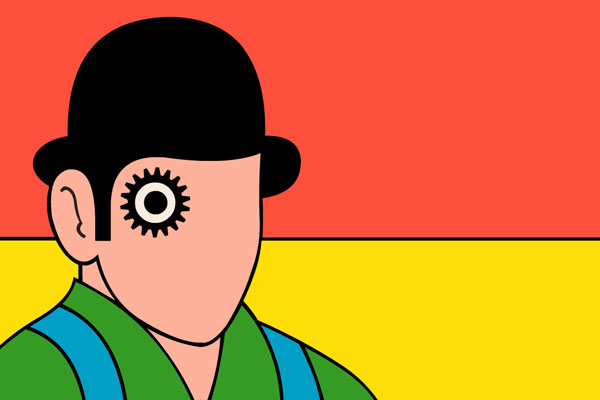A Clockwork Orange
by Anthony Burgess
The story follows the life of Alex, a fifteen-year-old delinquent living in a dystopian future England. He is the leader of a group of “droogs” who roam around committing unjustified acts of “ultra-violence” for amusement. The first part of the book covers two or three days in Alex’s life where he is involved in multiple beatings and rapes. The scenes are brutal. The reader learns that Alex is very intelligent and a lover of classical music. However, these qualities only confirm his sociopathic nature. Alex’s crime spree ends with his arrest.
The second part of the book covers Alex’s time in prison and his torture via “Ludovico’s Technique”. He suffers horribly, and the reader begins to sympathise with him. Alex attempts to escape prison by putting his name forward for a new method of “rehabilitation”. At this point the dystopian nature of the novel becomes totally apparent. Alex’s world takes on the shape of a society that is only a slight exaggeration of our own. The reader can only hope that the methods of psychological torture Alex experiences are no longer used. Brainwashing is a common feature of dystopian novels, but what Alex is subjected to is extreme: forceful suggestion to encourage mental association. Scary stuff!
The third part of the book is the most troubling. Alex commits terrible acts in Part One. He experiences horrific things in Part Two. But the effects of the brainwashing, and what it means for the world in which Alex lives, make Part Three the most frightening. You feel sorry for Alex when he is unable to defend himself, even when he welcomes the pain of a beating. It is disturbing that the government views Alex’s torture as a “success” and proof that “Ludovico’s Technique” is a viable and efficient way to manage the criminal population. The consequences are unthinkable: hundreds of thousands of criminals would feel physically sick every time they contemplate violence, never fully escaping the terror of a police state.
Unfortunately for Alex, but fortunately for the rest of his society, events transpire which bring public attention to his fate, inciting general outrage. This brings an end to “Ludovico’s Technique” as a method of punishment, and of controlling Alex’s brain, and he is restored to his former self.
The final chapter of A Clockwork Orange is omitted from the original American version of the book, and also from the movie. I won’t spoil it for any potential readers, but I do recommend that you watch the movie after reading the book, and decide for yourself which ending is better.
– Alex Stevenson



